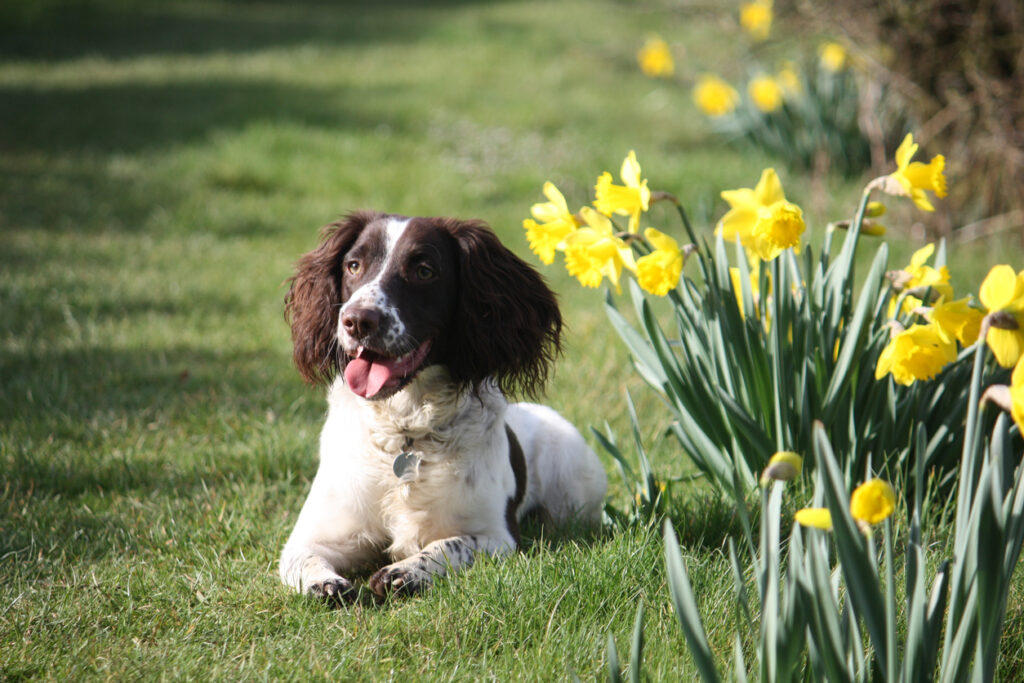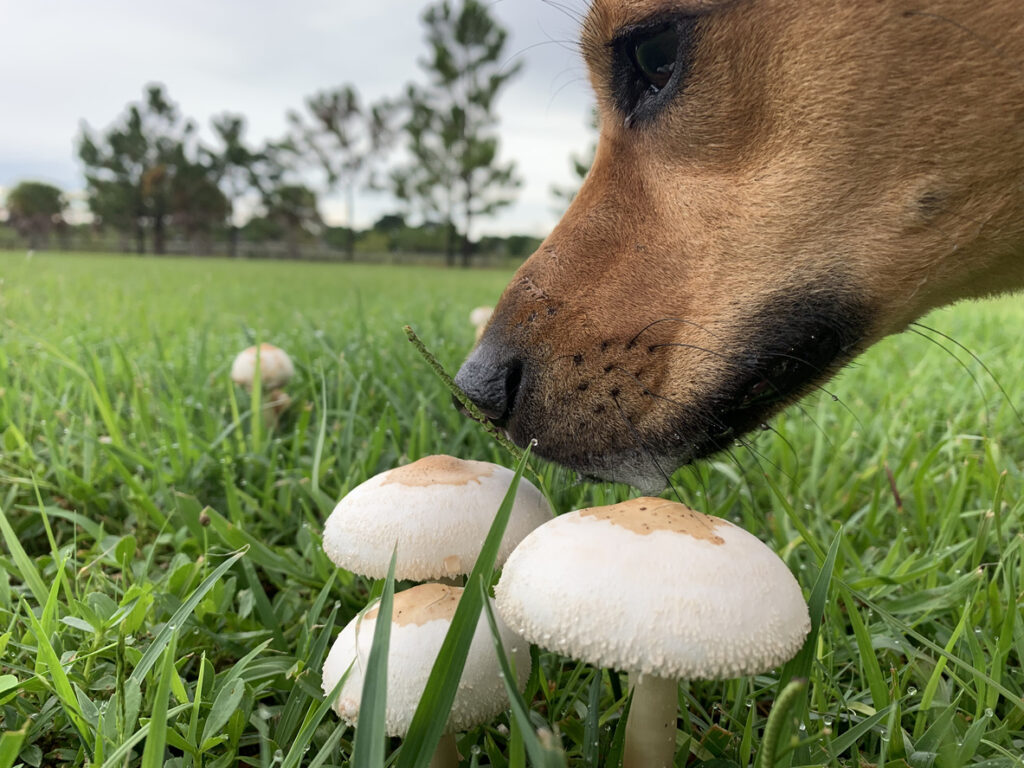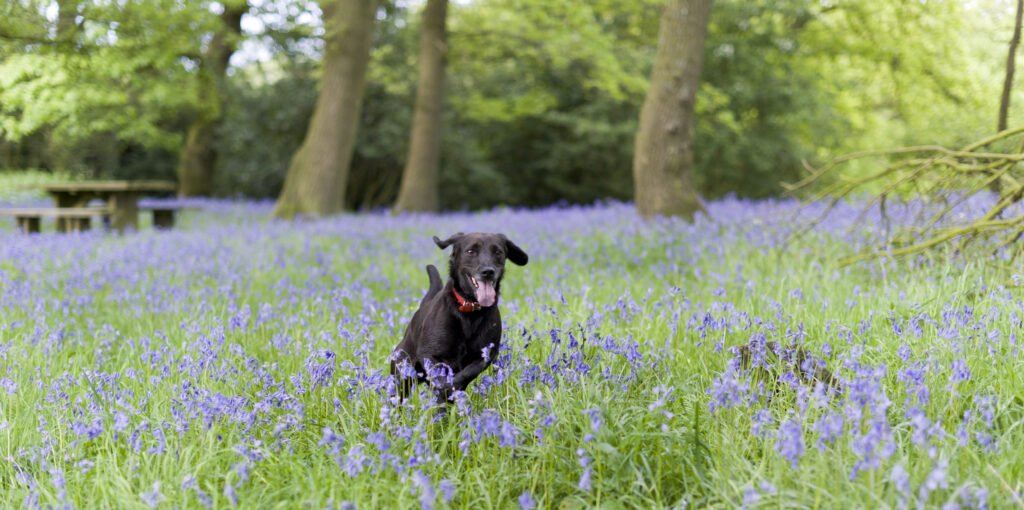They may look beautiful displayed in and around the home, but a lot of popular plants and flowers can be dangerous to our furry companions. From staple household flowers such as lilies to common garden plants such as ivy, discover which poisonous plants you should keep out of your pet’s reach and why.
Daffodils

Daffodils can be toxic for dogs, most often after ingesting the bulb but occasionally after ingesting the flower heads. Coming into contact with daffodils this way can cause vomiting, diarrhoea, and lethargy, which, in severe cases, may even result in dehydration, collapse, and convulsions. These dog poisoning symptoms can be seen from 15 minutes to 24 hours following ingestion. Other spring flowers, such as crocuses and tulips, are also considered to be toxic to pets, so it is recommended to seek veterinary advice if you are worried that your pet has ingested them.
Ivy
Dogs who eat ivy (otherwise known as Hedera helix) commonly develop dribbling, vomiting, diarrhoea and abdominal pain. Contact with ivy can cause skin reactions, conjunctivitis, itchiness, and skin rashes. It’s important to be aware that ‘poison ivy’ (otherwise known as Toxicodendron radicans) is a different plant.
Bluebells
Every part of a bluebell, one of the nation’s most loved wildflowers, is toxic to dogs. Symptoms of poisoning including vomiting, diarrhoea (which may be bloody), and abdominal discomfort. Bluebells can also have serious effects on the heart function and heart rate of dogs, if significant quantities are ingested.
Conkers
Although serious cases of poisoning are rare, ingestion of a conker can cause marked gastrointestinal signs; drooling, retching, vomiting, diarrhoea, and abdominal pain. The conker’s shell, as well as the conkers themselves, also presents a risk by potentially causing an intestinal blockage. Dogs usually vomit any ingested conkers quickly, meaning treatment to control vomiting may be needed.
Oak/acorns
Exposure to acorns in dogs is common in the autumn and winter months. The toxic ingredient is thought to be tannic acid, which can cause damage to the liver and kidneys. Signs include vomiting, diarrhoea (with or without blood), abdominal pain, inappetence, and lethargy. Ingested acorns can also cause intestinal blockage.
Mushrooms

There are thousands of species of mushrooms/fungi in the UK and luckily only a small number of them are poisonous. Due to the huge variety however, unless you are a mushroom expert, it can be difficult to establish whether the mushroom your pet just ate is indeed poisonous or not. Clinical signs tend to include mild vomiting and diarrhoea, but some mushrooms can cause more severe problems such as neurological (nerve/brain) dysfunction and liver and kidney failure. If your pet has eaten some mushrooms, try to collect a sample of what they were eating (in case it’s needed to identify the mushroom species) and then call your vet straight away for advice.
Poinsettia
Poinsettias are originally from Mexico and are famous for reaching full bloom in December. Eating poinsettia can cause drooling and vomiting, but only if they’re ingested in large quantities. On the plus side, the plant contains an irritant sap and it’s unlikely your dog would eat enough to cause serious harm because of the taste and irritation from this.
Mistletoe

European mistletoe is commonly found in the UK home at Christmas time. If eaten, it can cause vomiting, diarrhoea, excessive drooling and weakness.
Holly
While holly berries are an important winter food source for birds, they are toxic for dogs. Several varieties of holly berries include saponins, which can cause severe vomiting and diarrhoea if ingested. Other symptoms can include drooling, lip smacking and inappetence. There is also the more obvious problem of the prickly leaves potentially causing injuries to the face, eyes, and feet.
Lilies

A favourite flower amongst many, lilies are poisonous to our pets, especially cats. They contain highly toxic substances; even the water from the vase can be potentially fatal. Whilst lilies don’t pose quite as severe a risk to dogs, they are still dangerous – you should contact your vet if you suspect that your dog has consumed them.
Lilies are very dangerous for cats, with the primary toxic effects being on the kidneys. Initial signs of toxicity include vomiting, lethargy, or a lack of appetite. As the toxin begins to affect the kidneys, these signs continue and worsen as the kidney damage progresses. Without prompt treatment by a vet, the cat may develop kidney failure within approx. 24–72 hours.
Our articles are not a replacement for face-to-face vet advice. It’s important to consult with your vet on a regular basis to raise any pet concerns that you may have.




